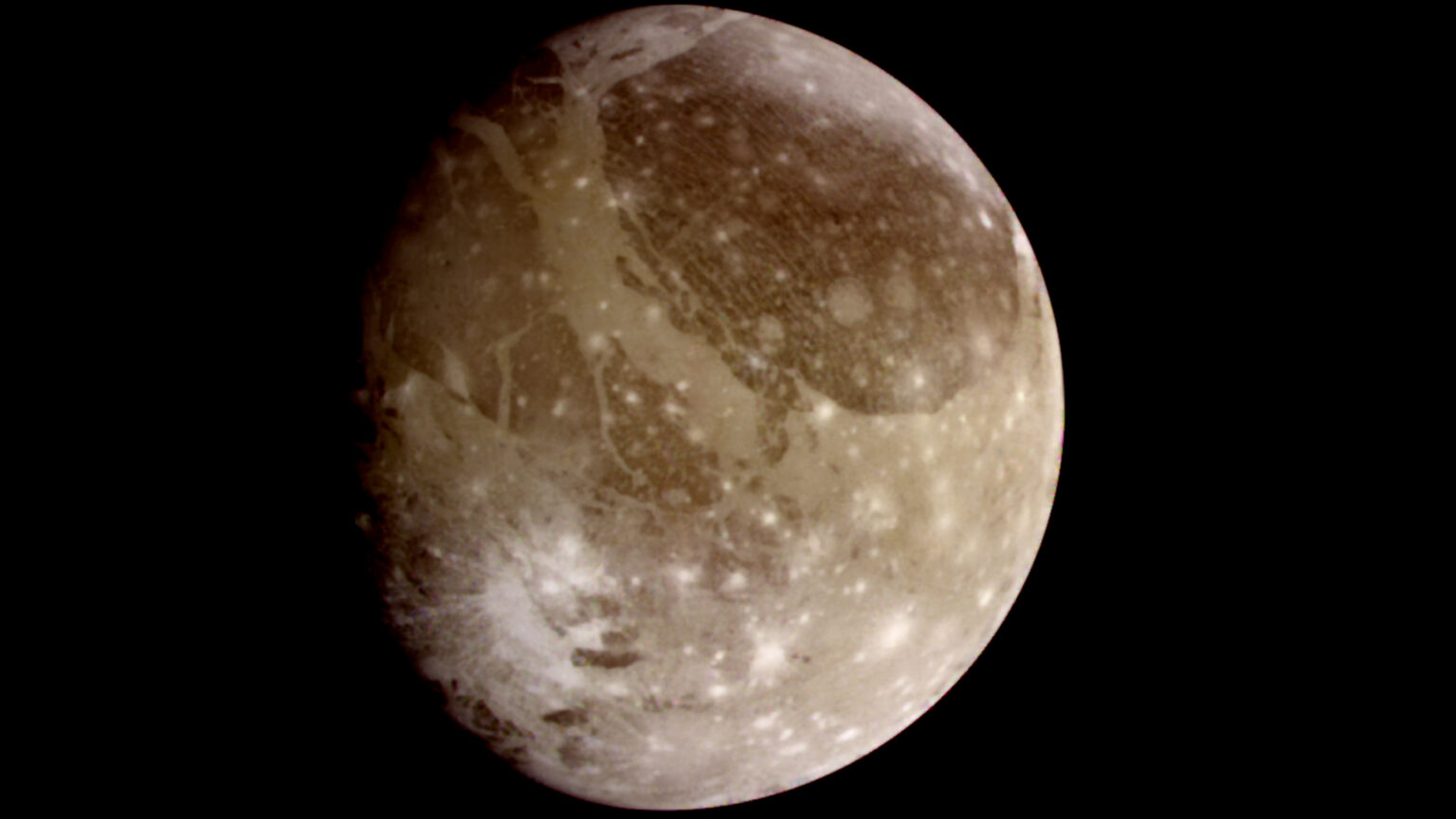On Jupiter’s moon Ganymede, hydrogen peroxide can only be found at high latitudes. This conclusion was reached by scientists working with the James Webb Space Telescope. This is very strange, because in neighboring Europa, the mentioned substance, on the contrary, occurs near the equator.

Ganymede in the spotlight
An international team of scientists working with the James Webb Space Telescope has obtained spectroscopy data on the surface of Jupiter’s moon Ganymede. It follows from them that hydrogen peroxide is present on it exclusively around the North Pole.
For many years, scientists believed that this substance, consisting of hydrogen and oxygen atoms, should be present on the entire surface of the largest moon of the Solar System. However, the absorption band at a wavelength of 3.5 microns clearly shows that there is only oxygen at the equator and on the opposite side of the moon from the North Pole.
And it’s very strange. Indeed, in neighboring Europa, which is very similar in its conditions to Ganymede, hydrogen peroxide is found mainly in equatorial regions. Scientists do not know how to solve this mystery yet.
Why is the question of hydrogen peroxide of interest to scientists
The fact that on the moons of Jupiter, the surface of which consists mainly of ice, has long been no secret to scientists. The magnetic field of the gas giant constantly bombards them with charged particles, as a result of which water decomposes into oxygen and hydrogen atoms, which spontaneously form new compounds.
Scientists consider the presence of hydrogen peroxide as an indirect confirmation that life can exist in the depths of icy moons, because if there is peroxide, there must be oxygen. In addition, these processes affect how the ice crust of the moons is formed.
Previously, scientists believed that these processes occur uniformly over the entire surface. But new research indicates that they are much more complex. Now scientists will determine what influences them: lighting conditions, changes in the magnetic field or geological features of Ganymede and Europa.
According to phys.org
Follow us on Twitter to get the most interesting space news in time
https://twitter.com/ust_magazine

